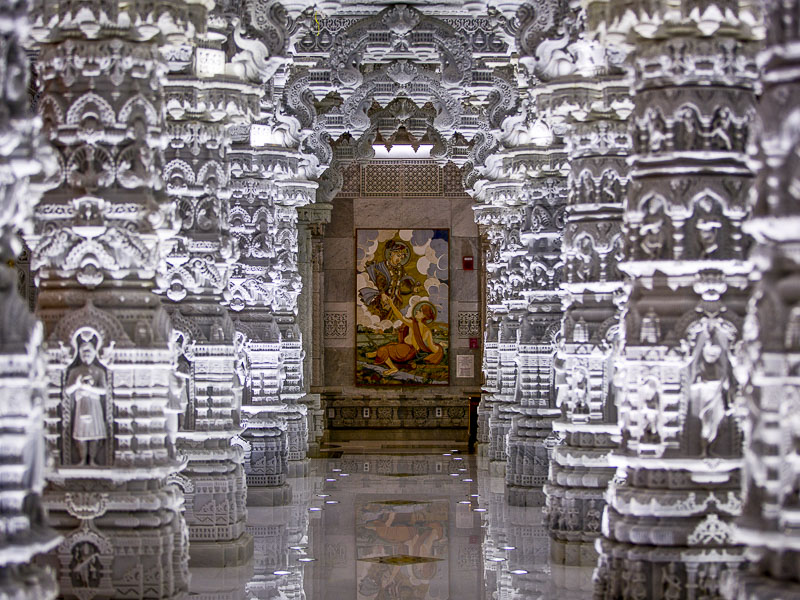
I don’t have much to add, but of course, the word “caste” is used but not “class.” I think we’ll expect more of this…

I don’t have much to add, but of course, the word “caste” is used but not “class.” I think we’ll expect more of this…
I came across this wonderful interview with Florian Wiltschko, an Austrian Shinto negi (priest) based in Japan courtesy Akshay Alladi. I was struck by some of the similarities in Wiltschoko’s worldview and my own sanskaras- the approach to life I was taught by my elders, particularly my mother.
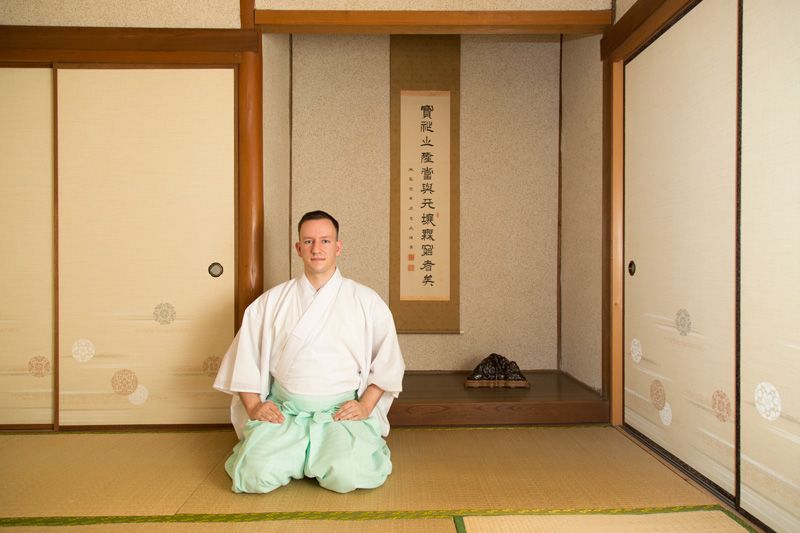
“[Japan] is rich and the seasons colour the natural landscape in beautiful ways. Maybe that’s why a monotheistic belief system did not evolve here,” he says. “The bounties of nature, on the other hand, were seen as being the workings of divine forces that needed to be respected and cared for.” This struck a chord. It’s a very Dharmic sensibility and worldview.
There’s also the challenge of adaptation and change, without losing the essence. Incorporating good ideas, discarding the bad ones, but all the while maintaining the core spirit. Wiltschko’s observations are based on the interactions between Shinto and Buddhism, but the same would seem to apply to modern Hinduism, which has over the centuries blended Vedantic and Shramanic metaphysics with folk tales and traditions. It’s a complex mélange and trying to describe it precisely to non-Indians reminds me of the parable of the blind men and an elephant.
What is noteworthy about Wiltschko is that he is a priest by profession. In my compartmentalised mind, there are gurus/yogis and then there are pujaris/purohits/archakas. The former are philosophers and the latter are pedants. There is some experiential basis for this, but perhaps some of it is also a function of my own biases. I “lost” religion in my teenage years through my twenties and identified as an agnostic classical liberal, only to “rediscover” it in my thirties. The religion that interests me is still quite rationalistic: a Vendantic Monism based principally on the Upanishads and the Bhagavad Gita, with an interest in Buddhism, Kashmiri Shaivism and Yoga. It is certainly not ritualistic. Temple visits are only to admire the architecture. The privileging, as it were, of jnana marga (the path of knowledge) over bhakti marga (the path of devotion).
But perhaps there is wisdom in customs and rituals too. There need not be a neat bifurcation between the high philosophy and the riti-riwaj. Jnana marga and bhakti marga are not mutually exclusive.
“It’s very important to maintain a positive inner spirit,” Wiltschko signs off. “You might say that it’s my mission or my calling to contribute to maintaining this spirit.” The words of a modern Rishi.
[The writer tweets @paragsayta]
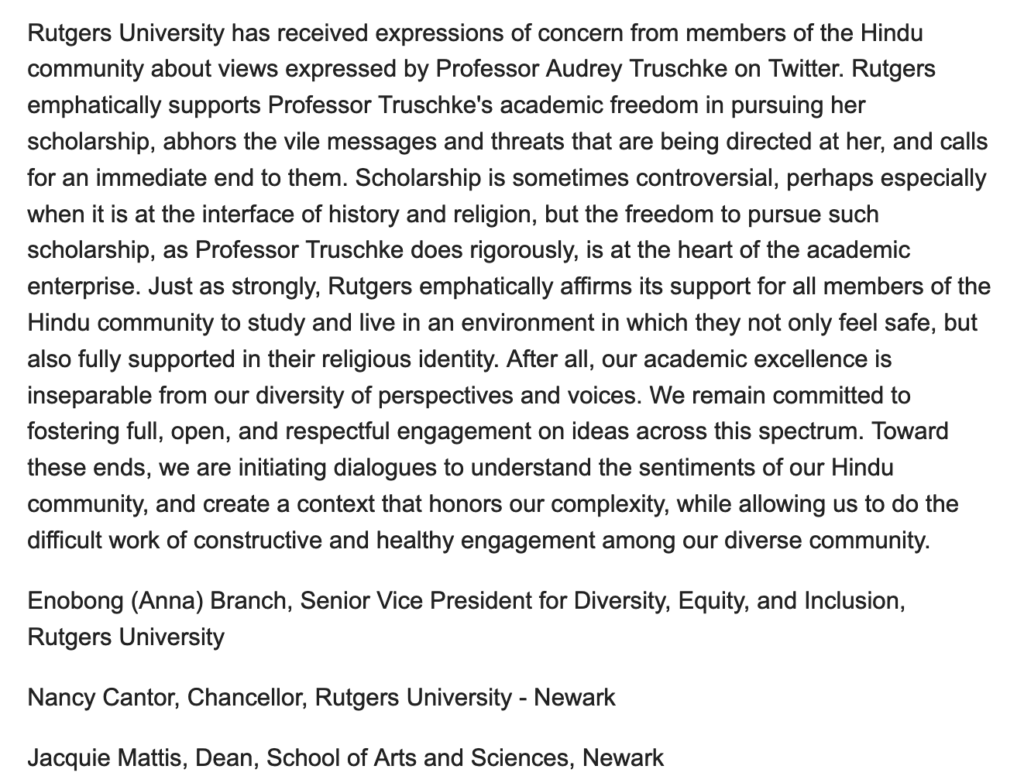
Audrey Truschke is mixing it up again with the vilest dregs of “Hindu Twitter”. In response, I tweeted “For my friends everything, for my enemies the law.” What did I mean here? Rutger’s unequivocal defense of academic freedom, even unto trolling, shows their hand in terms of whose feelings they value.
You can go to the FIRE website, but if you know modern American academia you know that the administration does not care about academic freedom when push comes to shove. The regnant ideology in modern left cultural discourse is that “the feelings of marginalized people/communities” trump “objectivity” and “truth.” Rutgers’ general statement is one I agree with, but I’m a 20th century “liberal.” Rutgers is not a place for 20th century liberals, nor is academia in general.
What this illustrates is that the American left does not think it needs to be “polite” to Hindus. Their feelings don’t matter. Perhaps the Central Committee of the Inner Party has a list of marginalized communities, and Hindus were left off. I don’t know.
Suffice it to say this is total hypocrisy. If Truschke’s career involved wrestling with Muslim trolls online they’d find something more ambivalent to say. Even with tenure universities can fire professors on pretexts as well. They choose not to. They choose the law. Because Hindus are not their friends.
Addendum: The fact that many “internet Hindus” behave like vile cretins with subnormal IQs does not help. But I don’t think this is the main cause. First, many people who are “against” “internet Hindus” who are Indian are quite vile and exhibit subnormal IQ online (my experience with Jat Sikh anti-Hindutva racists is the exact same as with Hindutva trolls; Indians online tend toward troll behavior more than other groups). Also, Truschke offends many more conventional and humane Hindus, but their feelings do not warrant obsequious submission.

Centuries ago, the Mughal Prince, Dara Shikoh wrote a treatise on the similarities of Hinduism and Islam – Majma-ul-Bahrain or The Confluence of Two Seas. Wading through the songs of sages born on holy riverbanks, Dara discovered striking similarities in Vedic verses with his beloved Sufi stanzas. Dara attempted to bridge Indian and Arab minds to not only bring material peace to communities in strife but also achieve inner peace by uncovering a quintessential spiritual unity.
Dara’s quest would be cut short by his fanatic brother, Aurangzeb, who would usurp the throne and execute Dara for apostasy. A reign of religious terror followed as Aurangzeb’s extremism left permanent scars on the subcontinent until the sparks of saffron would strike back as the upstart Marathas upended the Mughals into obscurity.
Yet, this is just a part of a much more ancient interaction. Before Islam galloped across the world, Arabs were aware of the subcontinent, al-Hind, and an interesting set of interactions played out. There is no grand trend or narrative here, but I want to tell you the story of an Arabia before and after Islam and how it spoke to an India that was eternally Hindu.
Continue reading The Confluence of Two Seas: India and Arabia
This is an essay I first published on my Medium page
You can also follow me on Twitter if you’re interested!
_______________________________________________
The survival of Indic and Dharmic cultures into the 21st century is nothing short of a miracle. These are traditions that have overcome countless obstacles — some internal, others external — to ensure their survival into the modern age. They have constantly adapted to the different threats of different eras. They have dealt with the destructive and consumptive desire of Islam in the medieval ages (as it endeavored to turn India into Persia or Mesopotamia —another ancient civilization and culture forgotten to history), as well as the inquisitive and penetrating eye of western liberalism that came with British colonial rule, which posed many (justified) questions about the moralities and validity of Indic cultures and traditions. These indigenous cultures continue to adapt and evolve to ensure their survival in the modern age. The resilience of India’s indigenous cultures is something that every person who identifies with India should be proud of.
But the reality is, that these cultures and the people who used to follow them, haven’t survived all in one piece. In the rigorous process of history, Indian civilization and Dharma has been in retreat for hundreds of years, and has lost its left and right limbs (Punjab, Sindh, Bengal) as a result of this retreat. This is if we just restrict our imagination to the historical territorial boundaries of India. If we extend our sight to the cultural frontiers of India — through the proliferation of Hinduism and Buddhism — these frontiers can extend all the way from historical Afghanistan to historical Malaysia. Buddhism in itself is a curious piece of Indian history — and criminally under-appreciated and often forgotten. It is one of the four main independent religious traditions that have come up in India — along with Hinduism, Jainism and Sikhism. And even though Buddhism is India’s most successful “export” ever (although that is being changed in modern times with Yoga), we have almost no “ownership” over Buddhism and almost no authority to speak for it. It is a curious paradox of our history.
The reality for a non-Abrahamic, indigenous culture in the 21st century is that due to the nature of the world we live in, which is dominated by two Abrahamic religions that are based on revelation and obsessed with expansion and evangelization, the survival and propagation of these indigenous cultures cannot be taken for granted. In my opinion, there are perhaps very few places in India where the roots of Dharma are as threatened as in Bengal. More precisely, I am talking about West Bengal, the 37% of Bengal that still remains with us in the Indic fold. The conversation becomes much more complicated if we try to include all of Bengal in this story. I say this with full humility, as I am not a Bengali myself. But I have lived in Kolkata for more than two years and, as a student of history and political science, I have not been able to stop thinking about this curious part of the Indian subcontinent.
So what does the world see when it looks at Bengal? How do we understand its history, its culture and identity? A simple Google image search result tells us that when the world looks at Bengal, it sees this: [This is one of the first search results for Bengal in Google Images]

If you’re an American, you probably think of the Football team from Cincinnati

Most people, unless they are from the Indian subcontinent, rarely think of the land of Bengal when they hear the word. There isn’t a lot of curiosity for this most-fertile of regions, its culture, its tradition, or its history. This is sadly seen among India as well, especially in the political realm, where states like Uttar Pradesh and Maharashtra have historically dominated the discussion. However, I think that this topic, especially the history and culture of Bengal, deserves more discussion and attention. This dissatisfaction with the way Bengal is viewed by the world is what has driven me to write this article.
There are probably many factors that have contributed to the current predicament of how we see and understand Bengal today. The historical narrative of the land of Bengal is muddied and foggy. One gets the feeling that it has been purposefully obfuscated by our historians to avoid coming to terms with the history of Partition and the desire to uphold what I call the “Commandment of Communal Harmony”. This is a favorite technique of the modern Marxist Indian historians who, due to a combination of ideological leanings and political patronage (mainly by the Nehru-Vadra family and the Left parties) were given almost a free-hand in shaping India’s historical narrative in the post-Partipendence (Partition + Independence) period. To break through this fog, one must go back to primary sources and also realize that history is complex. Often, many different things are going on in the same society at the same time, and that usually, the accepted narrative of “history” (that is, for example, taught to us as History in our school textbooks) is decided for political or activist purposes. A lot of local history in India is also not available in English, but is rather recorded by local authors in their vernacular languages, something that makes it slightly tougher for English-speaking academics to access. For example, we must realize that the creation of the Indian Muslim League in Dhaka in 1906 is just as much the history of Bengal as the activities of Surendranath Banerjee, Swami Vivekananda or Aurobindo Ghosh that were part of the freedom struggle of India. One part of Bengal considers Huseyn Shaheed Suhrawardy as their hero, while the other considers Subhas Chandra Bose to be theirs. The stories of West Bengal and East Bengal are parallel stories in many regards and as such, lead to what psephologists call a “fractured mandate”, when it comes to being able to claim “ownership” over Bengali history and identity.
In this article, I am going to attempt to understand the history of Bengal through a Dharmic sense, and to think about a recipe for revival.
Firstly, for those of us in India, it is important to realize that this is Bengal too. As is this. Bengali identity, history, language and culture is sadly not just ours to claim. We have to share this identity with a rather curious neighbor — one that has changed clothes thrice in the last 100+ years — First being known as East Bengal, then as East Pakistan, and now, Bangladesh. I prefer to call it East Bengal. You can see this in the results of a 2002 survey conducted by the British Broadcasting Corporation (BBC) about the Greatest Bengalis of all Time. The list is not topped by Tagore (although he does come second) or Bose (who comes fifth), but rather by Sheikh Mujibur Rahman, the founder of the current nation of Bangladesh. Huseyn Shaheed Suhrawardy, the man known in India as the “Butcher of Bengal” and someone who perpetrated attacks on his own Hindu citizens as the Prime Minister of undivided Bengal on Direct Action Day (16th August, 1946), stood 20th in this list. If that doesn’t tell you how distant the East Bengali mind is from the West Bengali mind, nothing will. And for me, it is a good embodiment of the problem that Bengal faces today: It is a fractured land with a fractured identity.

The roots of this confusion are found in the history of the land that makes up undivided Bengal. Bengal suffered from almost uninterrupted Islamic rule from the 13th century onwards till basically the Battle of Buxar in 1764. Other parts of India suffered from this destruction as well, but many of these places resisted and fought-back, as one can see with the Marathas in Central India, the Vijayanagara Empire in the South, the Ahoms of Assam and Maharaja Ranjit Singh in Punjab. These other parts of the country saw twists and turns, where Dharma was able to resist and reassert itself, thereby undoing the demoralization and fear that Hindus (and Buddhists, Jains and Sikhs) must have lived through under the tyranny of Islamic rule, which came along with things like the Jizya tax. Nothing like this ever happened in Bengal. In places like Awadh and the parts of the country that today make up the states of U.P., Rajasthan and M.P., even though the people had to live under the thumb of Islamic rulers, they often had local, Indic rulers who still maintained local autonomy by accepting the suzerainty of the Islamic rulers in Delhi or Agra, and resisted the complete Islamization of the population of the Indian North. For example, an interesting counterfactual question could be asked: what would the religious demographics of Rajasthan be today, had the Rajput rulers not acted as a buffer to preserve their own faiths (and the faiths of their subjects), as they did by accepting the suzerainty of the Mughals? Would Rajasthan even be part of India today? Or would it have been another province of Pakistan, given that it is attached to Sindh, where this change in the demographics of the rural population did occur?
This is exactly what happened in Bengal for hundreds of years. There was no Indic resurgence akin to the Marathas or the Khalsa, and there were no truly powerful local rulers to act as shock-absorbers against the consumptive onslaught of Islam. I believe that this is why the software of Islam is so deep-rooted here, and why such a large percentage of the total Bengali population (that today make up West and East Bengal) left their ancient cultures and faiths and adopted a foreign faith in huge numbers, especially the peasantry of East Bengal. This phenomenon has been manifested very clearly in the creation of East Pakistan, and later, Bangladesh. My intention here is not to paint Islam as a villain in all this. Islam is what it is — an unavoidable political and social phenomenon. It, along with Christianity, is one of the most significant social forces in the last two millennia of history. It is rooted in territorial expansion, conversion of non-believers, a strong sense of homogenization and discipline, etc. Islam is a primary driving force of history (like Christianity and Capitalism) and over the centuries, it has swallowed-up many ancient and proud civilizations like Persia, Egypt, Mesopotamia, the Central Asian tribes, and of course, a significant chunk of India. But for whatever reason, it couldn’t completely dismantle the roots of Indic civilization. And as someone who is an inheritor of this resilient Indic tradition, I am interested in asking why we survived, while ancient Persia or Mesopotamia didn’t. And as such, I’m less concerned with Islam’s history around the world, and more with its history in India. Islam’s adventures in India are, for me, best understood as analogous to an incomplete hostile takeover by a foreign venture capitalist of home-grown firm. It was an incomplete conquest and it ran into the resilience of the indigenous Indian cultures. However, despite this overall resilience, some places, like Bengal got the full force of the medieval Islamic onslaught. The result is that in the worldwide Bengali speaking population, nearly 70% of the people are Muslims, and about 30% are Hindus. Bengali, Sindhi, Punjabi and Kashmiri Hindus (and followers of other Dharmic faiths) are unique in India because they are minority populations among their sub-group. Would East Bengal be a separate country today if a Bengali version of Shivaji had emerged to reassert the primacy of Indic civilization in this region? It’s a question worth pondering over…
When thinking about Indian civilization and its history, a question posed by economist Harsh Gupta is often tough to answer: “Why is it that persons from Jammu and persons from Tamil Nadu consider themselves to be part of the same country, but persons from West Bengal and those from Bangladesh consider themselves to be from different countries? In an academic sense, East Bengal is the biggest conundrum, and potential lesson, for those who care about the preservation and restoration of Indic civilization. Even more so than Punjab and Sindh (i.e. Pakistan), which were buffer regions between India and Afghanistan/Persia, and were therefore always going to be tricky to keep in the Dharmic fold. Unlike Punjab and Sindh, there was no Islamic nation on the border of Bengal. Dharma fell apart here on its own. If you care about the preservation of Bengali Hindu culture and Bengal’s Indic identity, the scale of our problem is summed-up by this unfortunate fact: If any foreigner today picks an individual out of a randomized sample of the worldwide Bengali population, the probability of that individual being a Hindu is rather small. Just based on the numbers alone, Dharma cannot claim to represent Bengali identity. At the same time, it’s also important to realize that the smarter sections of East Bengal’s population must understand this confusion too. Once you go beyond the ethnic cleansing of Hindus and Buddhists in East Bengal in 1947 and 1971, you will observe the countless Hindu and Buddhist sites which are peppered all over the country that today calls itself Bangladesh. These sites are a physical reminder of the unerasable Dharmic past and identity of the land of East Bengal, and that is why these sites are often the targets of attacks from Islamic extremists in this country.
Bengal, and Bengali identity, is fragmented. The populations of East and West Bengal are long-lost brothers and sisters, who have so much in common with each other. However, the chasm between them, due to the political and social outcome of demographic and religious changes, is also incredibly large. And this is a sobering fact.
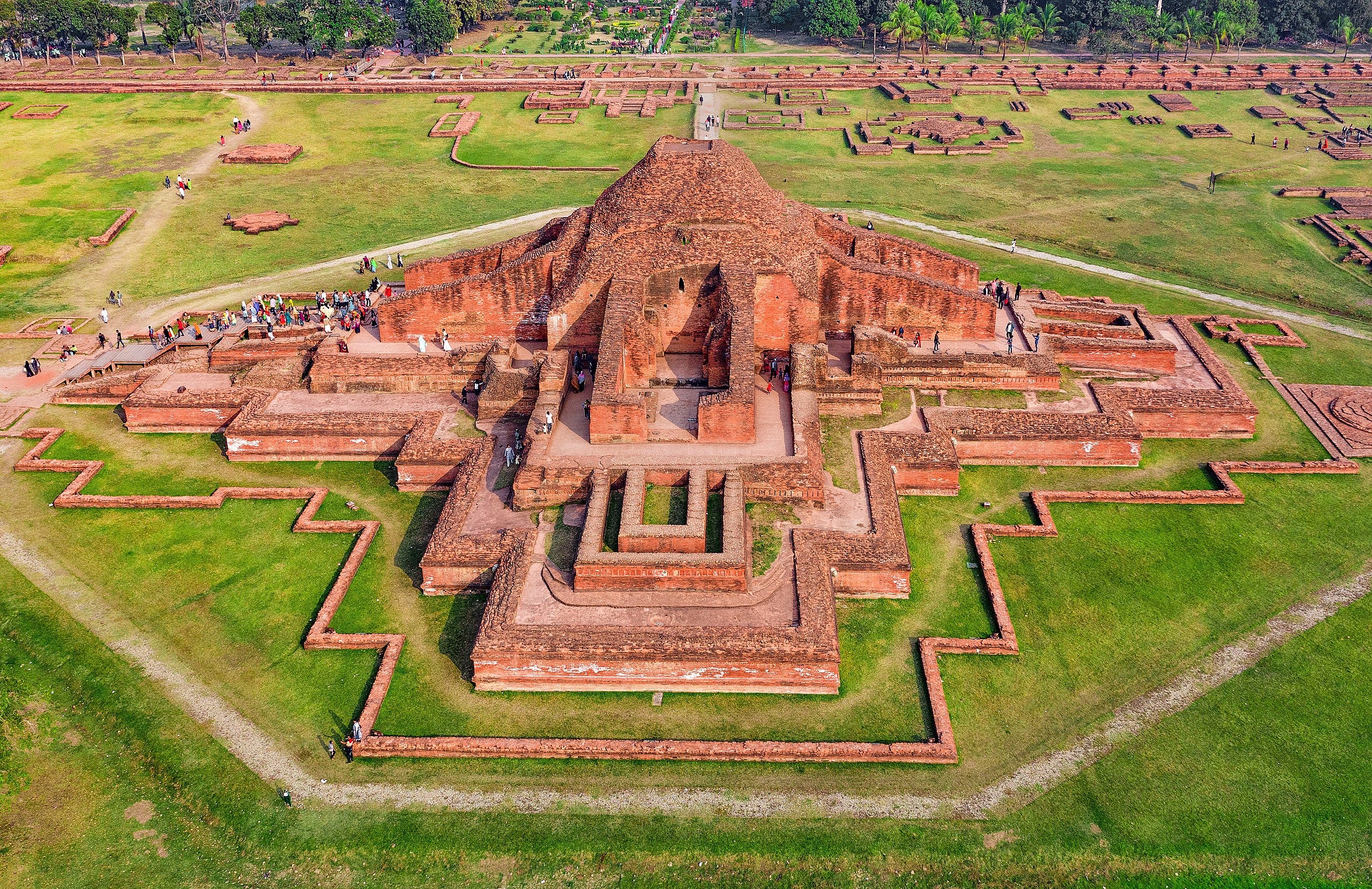
But let’s go back to the medieval era for a bit. Not surprisingly, having had the freedom to do what they wanted, Islamic invaders like Bakhtiyar Khilji (who destroyed the world-famous ancient university of Nalanda and is largely considered responsible for the spread of Islam in Bengal) and later, the Governors appointed by the Sultans of Delhi and the Mughals, went about erasing any surviving aspect of ancient Bengal that they could find. This must have included Hindu and Buddhist religious sites, but also non-religious “secular structures” as well that must have existed in Bengal before the arrival of the medieval invaders. This can be demonstrated by the fact that unlike other parts of the country, Bengal doesn’t really have a modern city which can say that it has survived from ancient times (like Kashi in U.P. or Madurai in Tamil Nadu). Most surviving major cities in undivided Bengal (in 1947) were from the Mughal or post-Mughal era (Murshidabad, Dhaka) or the British colonial era (Kolkata).
More than anywhere in India, Ancient Bengal — its artistic and architectural style, its literature, its philosophy, its culture — has been systemically airbrushed from memory. In my two-three years here, I have almost never heard anyone bring up the famous Pala kings of ancient Bengal (who were Buddhists and ruled the current Bengal-Bihar area between the 8th-12th century) or the Sena kings who succeeded them (who were Hindu rulers and ruled between the 11th-12th century). When it comes to historical references, the story of Bengal in the public consciousness (or how it’s presented to us) seems to begin with the British travails against the Nawabs of Bengal. And there is a curious silence about the history of Bengal before the rule of Murshid Quli Khan (whose birth name was Surya Narayan Mishra), the first Nawab of Bengal .

One of the famous cities of the Palas that lies in current-day West Bengal was the city of Gauda, which lies in the Nadia district. Its current dilapidated state is a good reflection of the severing of Ancient Bengal from its present psyche. Why do we not remember the great Gauda king Sashanka? Why does he not occupy the same space in the modern Bengali consciousness that King Harsha does for north India or Rajaraja Chola does in Southern India? Why is ancient Bengal such a distant and nebulous place in our minds?
This amnesia is not only in the mind, but also gets reflected in the infrastructure and architectural style of the land that today makes up West Bengal, as represented by the dilapidated state of many ancient monuments in Bengal. I don’t think any other part of India has been as deprived of a connection to its ancient past as Bengal has.
The interesting thing about this is, that despite all this, the Bengali Hindu culture, in West Bengal and in other parts of India like Delhi, remains vibrant and strong. Many years of living in Kolkata and going to Durga Puja pandals has shown me that this is the case. Bengali Hindus wear their faith and culture on their sleeves, are passionately devoted to Maa Durga and Kali (and of course, as we found out in 2019, to Lord Ram too), and are extremely proud of their culture and language, as they should be. Everyone in India who is not Bengali knows that the Bengali language is among the sweetest sounding languages of India, with an almost musical quality to it that makes every sentence sound like the verse of a song. However, even though Bengali Hindus are still passionately committed to their culture, the actual land of Bengal (forget about East Bengal, I’m talking about the small fraction still left in India) — its infrastructure, its themes, its temples, etc. — increasingly looks less and less Indic. Most of the structures in West Bengal today reflect a lifeless, “secular” style, which does the job of physically erasing Dharmic identity in public spaces. This is the part of India, at least according to my anecdotal and personal experience, where you will find the fewest number of temples or Buddhist structures. This, predictably, has an effect on the resilience of Dharmic life and attitudes. Ceteris Paribus, the fewer Indic artistic and architectural elements in an area, the more distant Hindus feel from their culture. I have observed this in Kolkata, a city that has a strange architecture and style, which I feel is partly affected by its British roots and partly by Partition. Due to the 30+ years of Communist rule, there has also been a proliferation of lifeless, brutalist architecture all over Kolkata that our Comrades imported from their Soviet Masters. However, the strength and resilience of the Bengali Hindu mind becomes clear during the period of Durga Puja, where these same, architecturally lifeless streets get illuminated with light and color. In a sense, these lights represent a sprinkle of Dharma, so strongly present and preserved in the Bengali Hindu mind, over their “secular” and brutalist surroundings.
I have really learned to admire the spirit and liveliness of the Bengali Hindu mind over my two-plus years here, and it is no surprise to me that Bengal was the wellspring of new ideas and revolutionary fervor when it came to fighting British colonial rule. However, while I believe all these things to be true, I think they also hide a darker, more uncomfortable part of Bengal’s history.
The fact of the matter is that Dharma is losing the land of Bengal, if we haven’t already fully lost it. Just like Punjab, Sindh and Kashmir etc. were lost in the past. And this is not to say that just because a place becomes Muslim-majority, it gets to lost by Dharma. There are many places in India where the majority population is Muslim, but those places do not feel like Pakistan or Afghanistan. There is something more complex going on here, which I am not sure about, but I think it has something to do with the fact that most Indian Muslims, despite having changed their faiths, still consider themselves to be part of India’s civilizational history (which of course, they are), but those from Pakistan and Bangladesh, and sadly, most of them in Kashmir too, have severed their centuries-long connection to Indian history and the faiths of their ancestors. It doesn’t matter to them that they wear Hindu names like Bajwa, Sethi, Tikoo, Wani, etc. Their narrative is now the narrative of the Ummah. To fully understand this, one must realize that the Partition of India wasn’t just an act of dividing up territory and a partial population transfer, it was an irreversible act by Punjab, Bengal and Sindh, of permanently leaving one’s home — physically and psychologically. Think of it like new software being installed in the same old hardware. Those of us who still believe in Dharma must realize the sobering fact that if we go far back enough in history, our ancestors and the ancestors of these very people who are today working to destroy Dharma, prayed to the same Gods. We must come to realize what a grave sense of injustice it is against Dharma that the sons and daughters of this soil — our brothers and sisters — are at war with Dharma because of the Abrahamic software that has been imposed on them. For me, understanding and feeling this sense of loss is essential for anyone who wants to fight to preserve, protect and even reclaim Dharma and Dharmic lands.
So, where does that leave East Bengal?
It is undeniable that places like Pakistan and even Kashmir (which is still in India), despite being historically considered part of India, are today outwardly hostile to those who practice any Indic faiths, or even for that matter, a different faith like Christianity, Judaism or Zoroastrianism. It is simply not possible, in 2020, for a Hindu or Sikh go to Multan, or Rawalpindi, or Peshawar, or Anantnag, or Karachi, and live a life of dignity and respect. All of these places were historically home to many Hindus and Sikhs, have long and famous (but often forgotten) Indic histories, but today, no Hindu or Sikh would even think about settling there. Now, the question I have for my Bengali friends is, does the same also not apply to Dhaka and Chittagong?

This is something I’ve been ruminating about since I’ve been here in Kolkata. As a student of political science and history, I cannot help but ask these questions, even if they might make some people uncomfortable. They come to my mind even if I don’t want them to.
Why is it that Bengal and Hindu Bengalis have chosen to bury the memories of Partition so deeply into the ground? This is one of the only two states (if you don’t consider the unique case of Kashmir), along with Punjab, that suffered directly from Partition. Such a violent and seminal event usually becomes the very cornerstone of any society’s collective memory, and the society usually vows to “never forget”. The commitment to memory that is seen in the Jewish survivors of the Holocaust and their progeny is a good example of this. But this has not happened here in West Bengal. In fact, when someone like me, who is not from Bengal, tries to bring up these stories and talk about them, he is often met with a strange kind of silence. As if the Bengali Hindu knows what I’m saying is true, but would rather not talk about it. It looks to me like a case of a victim of trauma trying to forget about the atrocities committed against him, hoping that this would be the only way to move forward. But I do not think that is the correct approach. Many people talk about how Hindus should forgive and forget about these unpleasant events of the past. They say that there is no point in bringing up the dark memories of the ancient or medieval past. Leaving aside the fact that atrocities against Bengali Hindus were conducted as recently as 73 years ago during Partition, and then again, about fifty years ago, during the 1971 War (i.e. they are not ancient or medieval history), I believe no self-respecting society should just forget everything and offer unqualified, blanket forgiveness.
Firstly, I think that societies should never truly forget the past atrocities committed against them. Dealing with the past, the positives and the negatives, is a very important part of the story we tell ourselves about our own history. For example, the primacy of the discussion about caste discrimination among Hindus is a good example of our society trying to deal with its complicated past. These discussions are often a great source of rancor in our society, but we still must have them. We cannot ask the progeny of those who faced untouchability in their past to simply “move on” and “forgive and forget”. This is a mistake I have often made as an upper-caste Hindu who despises the caste system and the divisions and discrimination it has caused in my own community. I feel strongly that this system has divided brother from brother and has laid down the seeds of the subjugation that we suffered through the ages. It has allowed those who wanted to destroy us, to be able to use our own divisions against us. However, it took me a while to understand how insensitive the statement “I do not believe in caste” can be, especially when coming from an upper caste Hindu. Brilliant Dalit intellectuals like Guru Prakash Paswan have rightly pointed out that it is easy to say this when you have never been made to suffer or discriminated against for your caste, a phenomenon that is still regrettably common in India, especially in rural areas. My change of heart on this issue is, I feel, a good example of how honest discussions about the past can help foster unity in a society. The past, in a sense, flows into the present, and these disagreements can be a form of therapy for broader society. So yes, even if it is uncomfortable, even if it can seem like unfair historical baggage, I do not think any society should ever forget its past. Because those who do not learn from their own mistakes are doomed to repeat them.
Secondly, forgiveness is a more complex phenomenon. I do believe that even if a community should never forget the atrocities committed against it, it should eventually try to forgive, in the interests of moving-forward as a society. There is just one, small, problem here. Forgiveness is not, and cannot be, a one-way street. In particular, why should a community that has suffered atrocities in the past ever forgive the guilty party, if the latter has never asked for forgiveness and does not think that it did anything wrong? This is just my opinion, but I feel forgiveness granted without an apology is not that far from foolishness.
As far as I am aware, East Bengal has never apologized for the atrocities committed against Bengali Hindus in 1947 or in 1971. Yes, East Bengal has changed clothes since then — it has gone from being wanting to be known as “East Pakistan” to being called “Bangladesh” — but it has never acknowledged the atrocities of the Noakhali Genocide (a massacre where the majority of victims were Scheduled Caste Hindus) or Direct Action Day (in Calcutta and Dhaka). This shows that East Bengal is not just a place or a piece of land. It is a state of mind, a “Nazariya”. While Bangladesh has done well to recognize the atrocities of the Pakistani Army in 1971 against its own, mostly Muslim Bengali citizens, it has never acknowledged the fact that in 1971, the sentence “How many Hindus have you killed?” was used just as often by the Punjabi Pakistani Army as “How many Bengalis have you killed?” Indians and Hindu Bengalis should offer no forgiveness to East Bengal unless it specifically acknowledges the religious cleansing done in Bengal in 1947, 1971 and continued anti-Hindu incidents we still see in Bangladesh today. Bangladesh and East Bengali Muslims must also admit their role in the creation of Pakistan, the reduction of millions of East Bengali Hindus to the status of religious refugees in their own land, the crimes committed against Hindu Bengali women, the forced conversions, the destruction of temples, etc. They should offer an explicit and honest apology for all of these incidents of the past and promise to protect the tiny Hindu and Buddhist minority that still calls Bangladesh home today. They must also promise to stop the forced demographic changes in the Chittagong Hill Tracts and promise to protect the indigenous Chakma and Hajong populations of this area. Then, and only then, should we ever consider forgiving them.
For some reason, Bengali Hindus have an aversion (at least according to my experience) to talking about their own historical pain. Maybe this is a result of the desire to forget, maybe it is a result of the 30+ years of Communist rule in this state, that had an almost totalitarian reach in the schools, the universities, and the media, and led to an entire generation being raised in this mindset. Maybe it is also because many Bengalis, especially upper-caste Hindu Bengalis have migrated out of Bengal, either to other parts of India, or to the other countries (a phenomenon, which when taken with the infamous brain-drain from Bangladesh in the late 20th century, can be sadly called “Bengali flight”).
All of this, combined with massive demographic and religious changes in the last decade (in places like Malda, Murshidabad and Burdwan) due to unchecked illegal migration from Bangladesh, has put the state of West Bengal in a strange condition of unease. Add to this is the presence of a wrecking-ball politician like Mamata Banerjee and the arrival of the BJP into the state, and you almost have the making of a perfect storm.
So is there a way out? Maybe. But I have to say that I am pessimistic, given how things have played out in the Indian subcontinent in the past, even the recent past. Dharmic society has yet to emerge out of these civilizational battles — in Punjab, East Bengal or Kashmir — with a positive outcome. But we cannot give up. We must break this cycle of defeat and retreat.
There are many things that can be done to fix the current issues facing West Bengal. There are economic problems, political problems and even social problems. But I do not want to get into those issues. Whether it is the Citizenship (Amendment) Act or the National Register of Citizens, these purely political issues are not the focus of my article. Instead, all of the issues I have raised need to be addressed and countered at a deeper level. To solve many of these issues, I think we need to take a detour to the 19th century, and take inspiration from the phenomenon known as the Indian Renaissance.
It is not new knowledge to anyone who has studied modern Indian history that the Indian Renaissance of the 19th century was an almost uniquely Bengali phenomenon. Raja Ram Mohan Roy, K.C. Sen, Ishwar Chandra Vidyasagar, Debendranath Tagore, Bankim Chandra Chattopadhyay were the leading lights of the early 19th century revolution in Indian thought. These names were followed by brilliant figures like Ramakrishna Paramhans, Swami Vivekananda and of course, the illustrious Rabindranath Tagore. The names can go on and on. Bengal was a force of nature in the 19th century. And of course, it did not stop there. Even in the freedom movement, Bengal had a huge role to play. In the Indian National Congress (with prominent early leaders like S.N. Banerjee, A.M. Bose and Deshbandhu C.R Das), in the Revolutionary Movement (Aurobindo Ghosh, Rash Behari Bose, Surya Sen), the working-class and Communist movements (M.N. Roy), and then, right at the end, after a brief period of Gandhian dominance, Bengali excellence revealed itself again in the form of Subhas Chandra Bose. Even the current right-wing in Indian politics, represented by the BJP, owes its founding to the often-forgotten Syama Prasad Mookerjee.
In my opinion, however, the 19th century Indian Renaissance was incorrectly named. It was actually part of the European period of the Enlightenment, and was clearly inspired by Enlightenment ideas of liberalism, free speech, tolerance, reason, logic, etc. A more historically accurate term would be the Bengali/Indian Enlightenment.
We are all aware of the brilliance of the 19th century Indian Renaissance. At the same time, we must also realize that in this same period of elite Bengali brilliance, where the pot of incredible ideas was churning, the seeds of communal differences were being sown of across many different parts of Bengal (especially East Bengal), which would start the process that would culminate in the events of the 1947 Partition. So a re-evaluation of this period in Bengal’s history is necessary for us to get the full and accurate picture of what happened in Bengal. And this can only happen when the people of Bengal are ready for a more honest conversation about their own past and the true, complete, history of the land they call home. Any discussion about Bengali history will hit what I call the “East Bengal event horizon”, a point after which it becomes impossible to ignore the fractured nature of Bengal, its people and of its history and the role of Islam in forcing this fracture. Only after this point can truly honest conversations about Bengal and its history, happen. But this can wait for another moment. For the moment, let’s go back to the the 19th century.
I believe the solution to all the problems I have listed can be found in an actual artistic revolution in Bengal, like the European artistic renaissance of the 15th-16th century, to complement the rebirth of thought that took place in the 19th century. Even though thinkers like Ram Mohan Roy and I.C. Vidyasagar were able to introduce revolutionary ideas and undertake long-due social reforms in Hindu society, they were unable to produce the kind of physical changes in art and architecture seen in places like Florence, Rome and Bologna during the European Renaissance, because it was the British state that exercised political power. The Bengal Renaissance in this sense feels incomplete, having only witnessed the intellectual aspect and not the physical aspect. The European Renaissance was, as the name suggests, a period of artistic and architectural “rebirth” for European society. It flared up the spirits of the population of Europe, brought them out of the intellectual rut of the Dark Ages, and laid the groundwork for the Enlightenment to follow in the next 100–150 years. Something similar is needed in West Bengal.

A movement like this could also have a galvanizing effect on the rest of India as well. And it must come from Bengal, given the history of this land and its people in being the leading lights for so many national movements in the past. In a sense, as Indians across the country chase a civilizational identity, an answer to the question, “Who are we?”, we are demanding true freedom from our colonial past and the history and identity it has defined for us and allotted to us. We are trying to figure out our identity in our own words, learning to read our own history in “first-person” and telling a story of India that is true, and free from the invisible hand of deception of activist and colonial historians. In this flame for a civilizational freedom, it would only be fitting for the spark to come from Bengal. In India’s history, the road to civilizational recovery has often run through this area of Bengal, and for the sake of India and our indigenous identity, it must do so again in the future.
This artistic Renaissance in Bengal must focus specifically on architecture and physical construction, but of course, should not be limited to it. Ideally, it would proliferate in all matters of arts, music, literature, etc. But, given the unique challenges that West Bengal faces, I think the solution can be found in the construction of many, many new temples and Buddhist structures all over Bengal. Coming from other parts of the country, one quickly realizes that the number of temples here in West Bengal is very small. And this is of course most likely due to the historical destruction during the medieval period, but can also be due to other causes like neglect. What better way to resurrect the spirit of Dharma in Bengal and reclaim the narrative of Bengal back from East Bengal, than to physically build Hindu and Buddhist structures to connect the Bengali population back to its ancient past? It would be an act of physical, as well as psychological rebirth of the forgotten ancient Bengali past. An explicit act to connect the present with the past, in acknowledgement of the unbroken nature of Indian civilization. A Dharmic rebirth, or as the French might call it, a Renaissance.
It is my belief that there is a direct link between Hindu demoralization and the destruction of our sacred places by our medieval friends. When the Turks, Afghans and Persians were destroying Hindu and Jain Temples and Buddhist sites, they were not just doing what they thought was their religious duty. They were trying to break the spirit of Indic civilization by severing all connections to our past and by denying our own public spaces to us for our worship. They were trying to break the back of an ancient, proud and independent tradition and civilization. And to an extent, they succeeded. The areas that today make up Punjab, Sindh, Kashmir and East Bengal are monuments to their success. The playbook was similar to how Islam replaced the native, indigenous cultures of places like Persia, Egypt and Mesopotamia. For a new culture like Islam to take hold, the old needs to be destroyed, physically and intellectually. But Indian civilization was made of sterner stuff. When the invaders destroyed our temples and replaced them with tombs and mosques, Hindus, Buddhists and Jains (and later Sikhs) did not just give up the fight. Instead, denied the usage of public spaces to assert our faith, we looked inward into our own houses. In my opinion, nothing embodies this spirit more than the Puja Rooms one can find in every Hindu household all across India.

It is perhaps the strongest symbol of Hindu resilience in the face of the unrelenting force of the medieval onslaught. And it was a silent revolution. It is a sign of our spirit that for every great Hindu public temple that these invaders destroyed or burned, thousands of new temples sprang up in Hindu houses across the country — from Lahore to Chittagong. In this sense, Hinduism is like a hydra. You can destroy one big temple, hoping to erase the indigenous and pagan identity of its followers, but thousands of smaller temples will spring up in its stead. And this happened in Hindu households rich or poor, big or small, in the north or the south. There are no people who embody this more than the Pakistani Hindu refugees in India, who live in places like Delhi. Having been completely ignored and failed by the Indian State, they live in shanty houses and slums. But even in these houses, you will find a temple room, or an idol, or a picture of God or Goddess. These people, in my opinion, are the greatest embodiments of the resilience of Dharma. And we as Hindus will do well to remember and embrace this aspect of our past.
But while it was admirable, this phenomenon was also a sign of Hindu retreat. Closed-off from our public places of worship, forced to pay the Jizya, we looked inside our own houses to protect our identity and faith. It decentralized our faith and traditions (moving from the public sphere of temples to the private sphere of the home), making them more resilient but also ending up in the loss of the social aspect of religion, as manifested in the public sphere. It has made us good at surviving, but not good at thriving. We shirk away from public spaces and avoid exerting our religious identity in public, relegating it to the private sphere. This is embodied in the fact that today if you go to a Hindu temple, you do not talk to anyone who is there to worship with you. Instead, you go with your family, worship the deity, take the prasadam and leave. In this process, it is possible you may not talk or interact with even a single other person there. This has led to the loss of a sense of community, of a common brotherhood among Hindus. This decentralization was the need of the hour, and is one of the reasons why Hinduism — unlike Ancient Egypt or Mesopotamia — has lived to tell its tale, but it came at a cost.
Restricted to our own houses, we developed an aversion to public construction of temples and other holy sites. And this created a vicious cycle. Because any person of any faith, no matter how strong the ideology is, also needs physical symbols of his faith in her surroundings to engender in her a sense of cultural belonging. And in the absence of such structures, she gets demoralized about her culture and faith. It is time we start building big again. In its darkest hours, Hinduism had to become the faith of Puja rooms, or of small, roadside temples under trees. This helped us survive in that period. But I feel that, despite “Independence”, mentally we are still living in that period. To break through this barrier, we need to build structures that any Hindu can feel proud of, that sing back to us our history and traditions every time we walk past them, and that gives the Hindu a sense of belonging to the public spaces again. Nowhere is this needed more urgently than in Bengal.
I can already sense the opposition coming from a section of people reading this: “Why not build schools and hospitals instead?” And to this, I would say, “Of course!” Let’s do that as well. But while constructing these schools, hospitals and other structures, let’s build in an architectural style that is uniquely Bengali — that I want to call the “Neo-Bengali” style — so that any person can look at buildings from Bengal and immediately identify where they are from — just like they can with classical European buildings. More broadly, we can extend this to an umbrella artistic revolution of a “Neo-Indic style”, to represent the diverse artistic and architectural style of different parts of India. An example of what can be considered a “signature style” is the Greco-Roman pillar, which is an instantly recognizable hallmark of Western European Architecture.
The Parthenon of Athens in Greece has been “kept alive” in modern times with structures like the White House of the United States of America, or even the British-built Raj Bhavan in Kolkata, West Bengal. These structures show an architectural and civilizational continuity through thousands of years, and act as “signatures” of Western civilization. They are an example of cultural and civilizational “rhyming”, and act as the thread of continuity for any civilization. What is stopping us from searching for our own signature styles?
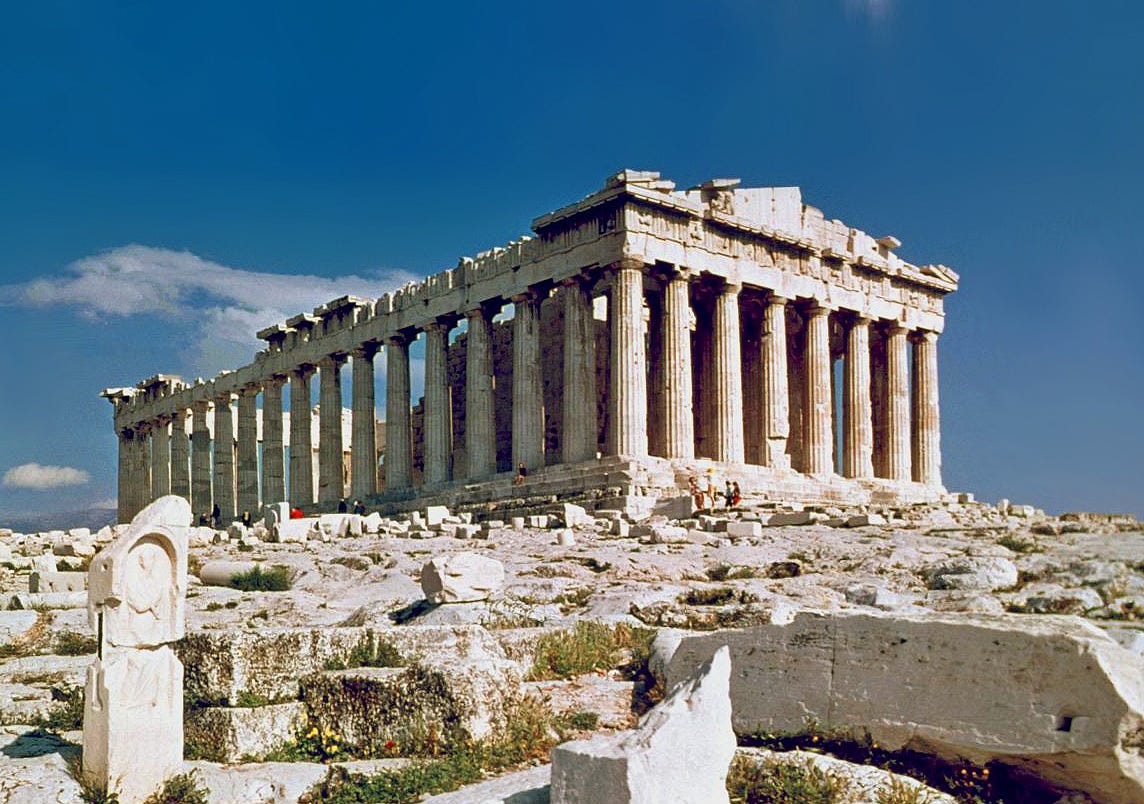


So what should these Neo-Indic structures look like? I think this is a discussion that our society should be having every living day. There is no shortage of artistic creativity and splendor in India, and I think it just needs to be channeled in the right direction. This Neo-Indic style will also vary by region, but in Bengal, there is a style I have been able to find that fits the bill for what we’re looking for.
Even though there was no true, Indic resistance to Islamic rule in Bengal comparable to the Marathas or the Sikhs, there were some smaller kingdoms that managed to retain some autonomy and build Hindu temples in the midst of the onslaught of the medieval era. Among them were the Malla kings of Birbhum and Bishnupur, who, along with many other local Rajas and Ranis, built some beautiful temples in many parts of West Bengal. These temples have a beautiful, unique style to them and the Do-chala curved roof on which the dome sits is truly iconic. They are a strong retort to anyone who claims that there is no “Bengali” style of Temple building.
I think that these Terracotta structures should be used to develop a “Neo-Bengali” architectural style that can be used in buildings all across Bengal.
Similar temples in this style are found all over Bengal. Most of these structures are built in the “Pancharatna” (five pillars) and Navaratna (nine pillars) style, a style that is native to Bengal. The Malleshwar Shiva Temple in Chandrakona in Paschim Medinipur is another temple built in the same style. And there are many surviving Hindu temples in East Bengal too. Even here, the iconic curved roof is visible:


Now, the funny thing is, that it seems like someone here in Bengal has definitely recognized the need for a temple revolution in Bengal. Given the fact that this is Bengal, that should not be surprising at all.
In 1855, Rani Rashmoni oversaw the building of a famous temple near Kolkata that was devoted to Maa Kali. And lo and behold, it is an example of exactly the kind of new temples I would like to see all over Bengal!
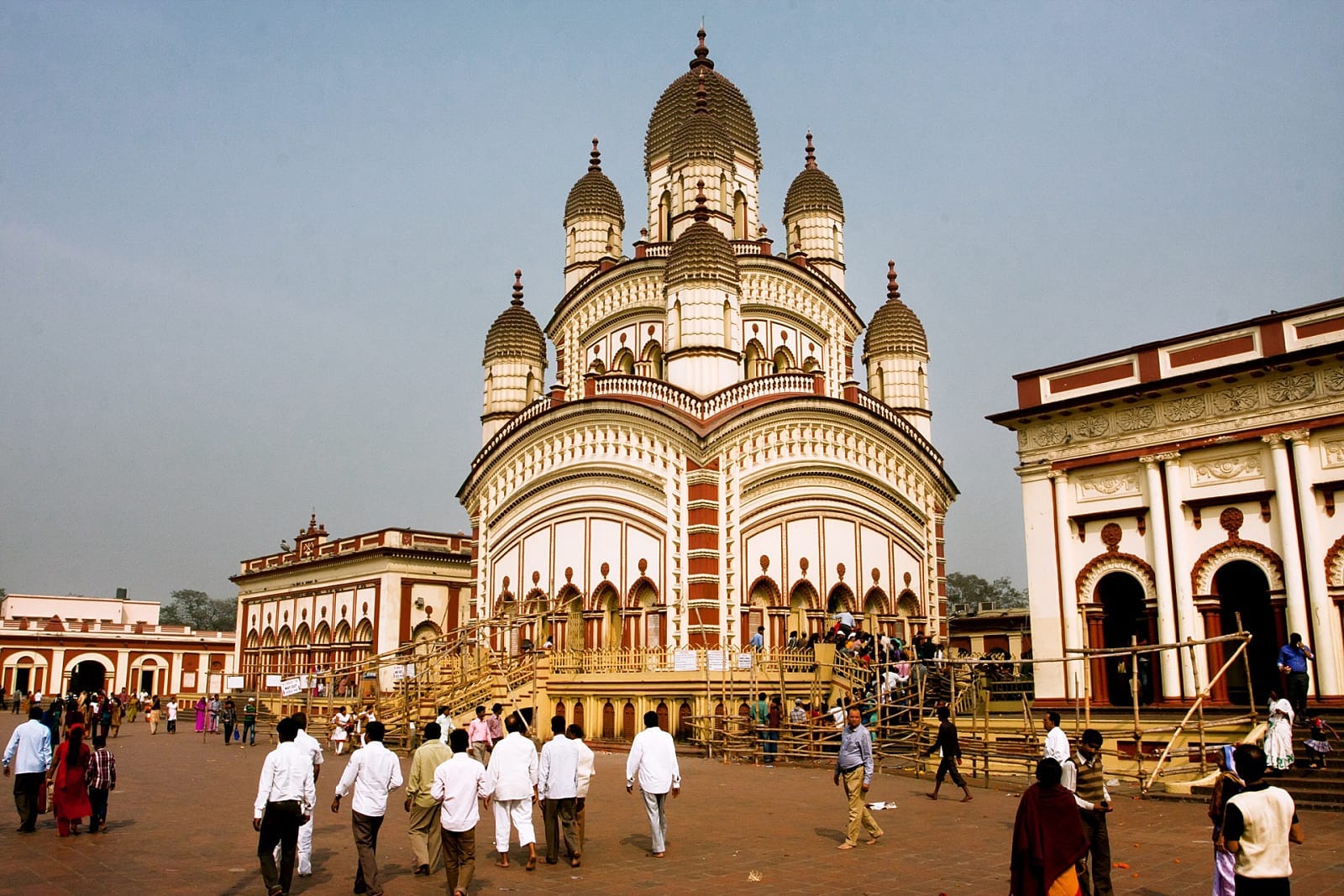
This is, of course, the famous Dakshineshwar Temple near Kolkata and if you look closely, especially in the roof of the temple, the Terracotta temples of Bishnupur will sing-out to you. This is a great example of Neo-Indic art, a structure that takes the best out of the old, and brings it into modern times. It creates a link to the past, while meeting us in the present. As a society, we must attempt to undertake a movement to build temples all over Bengal that are inspired by the look of the Dakshineshwar Temple. Not only that, the iconic Do-chala and Char-chala curved roof of these temples can even be used as a motif in normal structures like residential buildings, offices, schools, etc. A consistent architectural style can really add to the beauty of a place — as we see in Indian cities like Jaipur and Chandigarh — while a confused architectural style often leads to a confused identity — as is seen in Delhi (Lutyens vs. Old Delhi). And architectural beauty is a potent force for inspiring the people that live in that place.
A good example of what not to do is the structure being constructed by ISKCON in Mayapur, West Bengal. While ISKCON is doing many good things in working for the revival of the Hindu spirit in West Bengal, especially in the part of the state where Mayapur is located, the huge structure that it is building with the investment of millions dollars is sadly, a missed opportunity.
This structure, while aesthetically pleasing, is unfortunately very stylishly disconnected to Bengal and its history. In fact, this structure looks more like a Roman structure, similar to the Capitol Building in Washington, D.C. in the U.S. or even the Victoria Memorial in Kolkata. In my most charitable opinion, I find it to be artistically and stylistically confused, as if it is trying to straddle the line between the Indian and Western Greco-Roman style. And let me be clear, I am not completely opposed to such a fusion of styles. I think they can lead to some beautiful creations and structures. However, I see this new Temple being constructed in Mayapur as a missed opportunity. It seems to be a project being done with the best of intentions, and no one can doubt the commitment of ISKCON to the revival of Dharma, but it also seems to be missing the point a little. I cannot imagine how wonderful it would have been to instead have a structure that takes its inspiration from the Terracotta structures of Bishnupur and had the size and scale of this Temple being constructed in Mayapur. But oh well, at least ISKCON is trying to do the right thing here, even if I feel like they have missed a great opportunity to construct something that could be the crowning jewel in Neo-Bengali art. I must say, it is also possible that I am missing some context with this temple. Maybe it takes inspiration from a different Bengali form of architecture that I have simply not encountered. Maybe more thought has gone into it than I am realizing and this structure is trying to represent something I cannot comprehend. That could be the case, but I remain skeptical and am left rueing a missed opportunity.
An architectural movement across Bengal in this style, and of course, in Buddhist styles as well to honor the great Buddhist Pala kings of Bengal, is what I think Bengal needs right now. It would be a beautiful way to restore the physical presence and emotional spirit of Dharma all over Bengal. Because make no mistake about it, preserving Dharma in the little part of Bengal that we have left is absolutely essential to the survival of India. This is because India, in the last 70 years, has not only lost the territory and people of Punjab, Sindh, and a slightly smaller extent, Kashmir. We have also lost these places in a civilizational sense. These are all places with long Indic histories, are home to countless Indic shrines and monuments, had famous Indic rulers (like Kanishka in Kashmir, Raja Dahir in Sindh and Ranjit Singh in Punjab) and were home to large populations who considered themselves as a part of the Indian civilization and its history. But that connection has almost completely been severed in the last seventy years, forcefully and violently.
Regrettably, the same applies to Dhaka and Chittagong, places whose names ring loudly in our history but are today distant memories to us, with populations openly hostile to Indian civilization and Indic faiths. I do not think Indic civilization can survive the loss of the entirety of Bengal, and this is why it is so important to preserve Dharma in Bengal. To do this, we must attempt to bring about an architectural revolution in how structures are constructed in Bengal through the development of a unique, Neo-Bengali style, and construct hundreds of Temples and Buddhist sites. The hope is that this would lift the spirit of the land of Bengal and lead to another golden era for the state and its people.
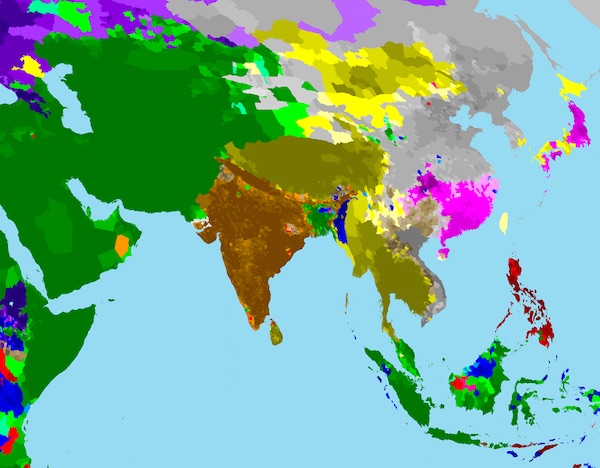
The Caravan has a piece up intended to inflame, The Hindu Hoax – How upper castes invented a Hindu majority. If you are a sudra or an avanra who believes in the Hindu religion the piece seems geared to denying you all agency or independence. You are a dupe, the victim of “false consciousness.” The Brahmins control you!
That is fine as far as it goes. I am not a Hindu or from a Hindu background. Instead of being offended, mostly I just roll my eyes. And yet I have to admit that twenty years ago I would have been interested in, perhaps even attracted to, the idea that “Hindu identity” or “Hindu religion” was “invented” in the past few centuries. It’s one of those counterintuitive “Freakonomics-style” facts that you can deploy for fun and rhetorical profit. “Actually, did you know….”
But after reading and thinking about this for a few decades, I think this is wrong. I don’t think this is wrong because of what I know about Hinduism, as such. I think this is wrong because of what I know about the spread of religion over history.
For many decades astronomers have been arguing about the existence of “planet X”, which is an undiscovered planet-sized object in the outer solar system which may need to exist to explain the orbits of the planets we can see. That is, we don’t have any evidence of this planet itself, but, we have evidence of its impacts on the other planets. Whether “planet X” exists is irrelevant. Every time I check the consensus seems to change. The point is your model of something can allow you to infer facts through deduction.
As many of you know, one of the mysteries and miracles of human history is how India maintained its religious uniqueness despite 500 years of predominant Islamic rule. In Iran, the best data suggests Muslims were a majority after 300 years. Egypt, it probably took a little longer, but 400 years seems right. I’ve written extensively on hypotheses why India was different. This post isn’t about that. Rather, the very persistence of a non-Muslim majority is indirect evidence of the religious character and identity of the people under Muslim rule.
The stylized fact that I see bandied around is that non-Brahmins, at more modestly Hindus who were not twice-born, had their own non-Hindu religious traditions. These local and indigenous traditions were bracketed into and assimilated as Hindu only within the last few centuries. Before that, it’s best to think of them as not Hindu at all. A conspiratorial and unflattering model is that Brahmins and their allies engaged in a massive re-identification and implicit conversion campaign against the pagan masses, who were as distinct from Brahmanical Hinduism as Muslims were.
The fundamental problem with this is in other areas the pagan and marginal people invariably defect and convert to an alien and novel new religion first. This is the Iran and Kashmir, model. Most of the non-Muslims remaining are of the priestly caste (this is the origin of the Parsis). The core of the old religion. But people on the margins or who were always outside of the boundary of pre-Islamic elite identity quickly switched to becoming Muslim. Turan, north of Iran proper, Islamicized more rapidly than Iran, because it was multireligious, to begin with. In the Roman Empire, nobles from the frontier provinces converted to Christianity faster from the inner core zone. The Roman and Iranian example actually has resonances to the Indian subcontinent, as one argument for early and pervasive Islamicization in the northwest and northeast (Punjab and Bengal) is that its Hindu matrix was weak to nonexistent at the time of the Muslim conquest.
Where am I going with this? If I was a believing Hindu, perhaps I would contend that the persistence of Hinduism in the face of Muslim domination is a function of the power of God and the gods protecting their people. It is a literal miracle. But I’m not a believer in religion. Another hypothesis is that India is the exception to the rule universal elsewhere. A mass of pagan people without any religious connection to a priestly caste (Brahmins) somehow maintained their identity and practices in the face of a dominating “higher religion” (Islam). Then, the cunning Brahmins during the colonial people convinced these non-Hindu pagans that they were actually Hindu!
Both scenarios are implausible to me. First, because there is probably no God in the first case. Second, because I’ve met Brahmins, and they aren’t that incredibly persuasive and Machiavellian. Rather, like “planet X”, I default to the thesis that there’s an identity, a self-conception, a set of beliefs and practices, which suffused itself through the matrix of indigenous Indian groups. Though there was some defection, for various reasons, the cultural matrix was strong enough to maintain itself down the modern period, when information technology and modern identity formation created something much more coherent. That cultural matrix is the precursor to Hinduism today. It wasn’t a conspiracy. Just a natural evolution.
One of my earliest memories of my childhood is watching the Mahābhārat with my dad. After we dropped my mom off for her night shift at the factory, we would return home, and a black rectangle filled with film would catapult me into a confusingly wondrous world. From the magical arrows whizzing through battlefields to the terrifying image of Time, the narrator of the epic, transposed across a cosmic abyss, I was glued to a story I couldn’t truly grasp but loved at the same time. I could barely understand what the characters were saying (I spoke Gujarati at home, not the hyper Sanskritized Hindi in the serial) and was too young to read the English subtitles fast enough. I would constantly interrupt my dad, many times to his annoyance, but he would still lovingly explain these stories that would make an imprint on me for the rest of my life.
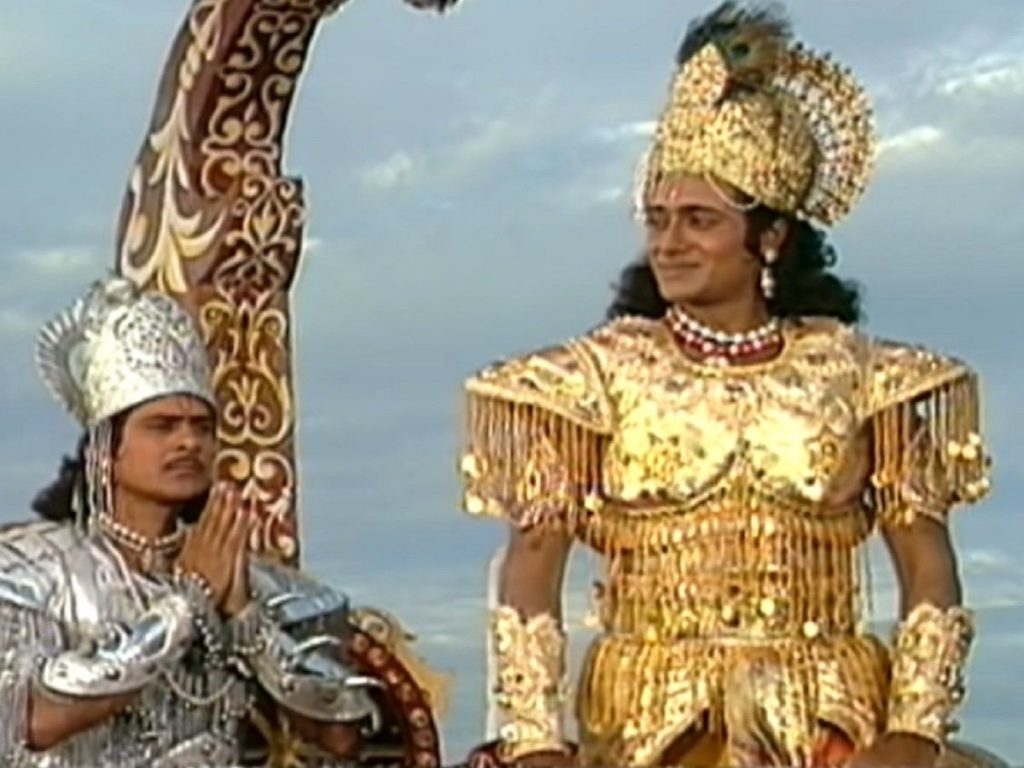
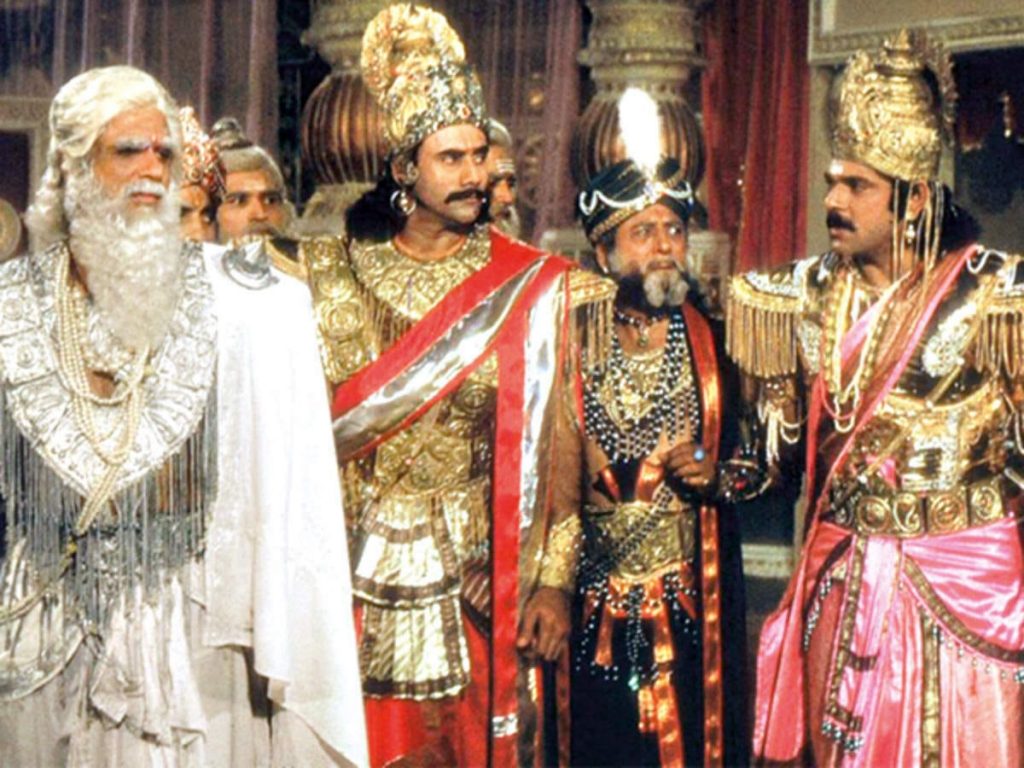
As my life passed, I would see so many of the stories from the Mahābhārat play out in my life and in the world around me. The blind love of a long-gone Dhritarāshtra came alive with my parents, who showed me love, despite my bad behavior, my failures, and my unending ingratitude, one of my greatest flaws. Their love was uncompromisingly unequivocal, and I was an unworthy Duryodhan. I saw the struggles and rise of “low-born” Karna with my own family, as we grew from a family who couldn’t even afford to spare money to buy a popsicle from the ice cream truck that taunted me every day as it passed by my house to slavishly building a motel business in the middle of nowhere to selling it and owning a nice single-family “American Dream” home with many fewer worries than we grew up with. And perhaps most importantly, I saw the devotion or bhakti of Rādhā through my family’s Hindu faith and regular attendance to our local temple – a tradition that grounded us through tough times and brought a sense of community, fellow “gopis” perhaps to share our lives and love with.
Those evenings watching the words of Vyāsa transform into images will forever be special to me. For those nights would fuel the dreams of my days as I grew up connected to a timeless culture and values. And they would doubly serve me when I learned of the nightmarish state of my fellow Hindu diaspora with regards to their views on Hinduism and Hindus.
To find the answer to the titular question, I did a bit of “field reporting” one weekend with my fellow Hindu-American friends starting off with a simple question:
Why do you stand up for Black, Hispanic, and Muslim people for the injustices they face, but not for Hindus?
The most common responses were along the lines of:
So I prodded further and mentioned the atrocities Hindus face in Pakistan, Bangladesh, and even parts of India. Yet Still, the answer was “I literally never heard this before.”
Then came a visible sense of discomfort, and I know why. My question then silently morphed to “Why don’t you stand up for your own people” in their minds. I didn’t need to spell it out, but it turned into those very cutting words – why don’t you stand up for your own…
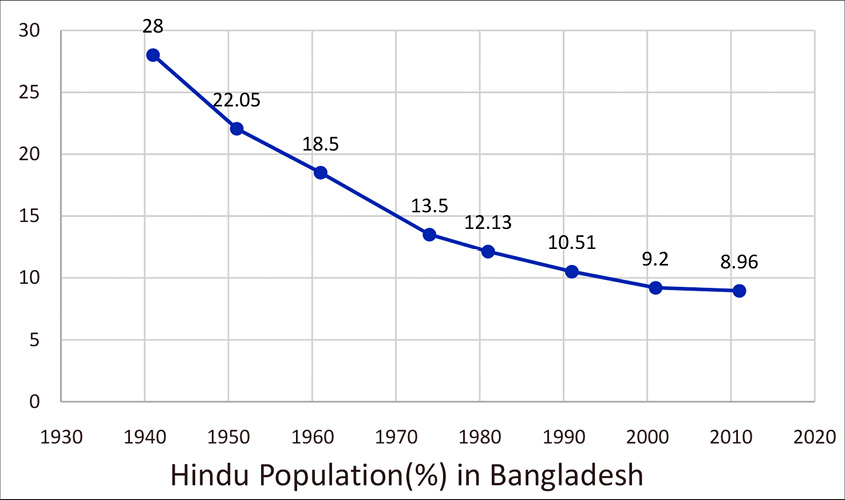
The rapes, the forcible conversions, the killings, the discrimination, the demographic collapse all signaling horrors that didn’t have any similar magnitude of rivals in India. The initial response was denial or wishing away the numbers I gave them: “Oh how do you know all that happened to them?!” “Maybe they converted willingly!”
I mentioned CAA and the refugees begging to return to the land of Dharma. Denial then became equivalating.
“Well, this all probably happens in India too!”
I kept unpacking this. I ask them, “why do you think this way?” Note – I tried to avoid a confrontational tone as much as possible, just neutral questioning so as to not pry open any vitriolic reaction. They talked about their parents’ hysteria over Pakistan, their WhatsApp forward fueled hatred, etc… I tried to explain to them that the equivalence wasn’t there. That the magnitude of what happens to Hindu minorities in Pakistan and Bangladesh is much worse presently and historically than what happens to non-Hindu minorities in India.
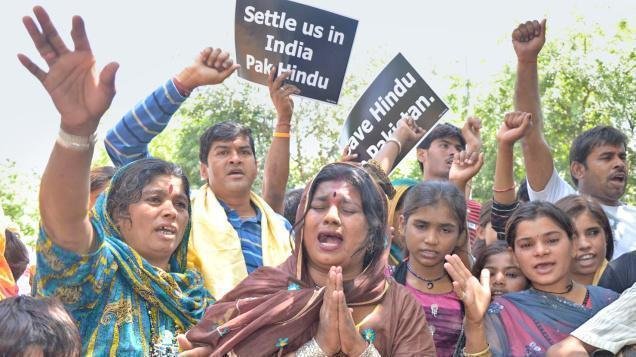
But they just weren’t having it.
“I don’t believe you. India is just as bad”
Now, India is of course not perfect, now or historically. But it is a work in progress. It is diversity in action in a way very few countries (The United States and Brazil are the only ones that come to mind) can compete with. India is pluralism, both its virtues and flaws.
By this point, we linked up with a few other friends and the conversation dropped. But let’s continue this theme with a few other independent observations and anecdotes.
Modi equals Trump – this fantastically false idea is an atomic bomb on one’s perception of India. A very simple notion that has a number of externalities. Hindu-Americans are fairly “woke” from my personal experience, and Indian-Americans heavily lean Democrat. Standard diatribes against “45” are common when talking politics with my Hindu-American friends. I don’t really care as I don’t support him, but the Trump Derangement Syndrome (TDS) gets tiring after a while.
Policy-wise (you know, the actual actionable impact that changes people’s lives and futures), Modi has done more socialism in one term than Bernie Sanders will ever do in his lifetime. The comparison fails at almost every metric:
Right Wing, Left Wing, “nationalism”, “conservative” and other meaningless labels are even more irrelevant when thrown into the ocean of Indian politics. They sink into nothingness. They’re pointless.
But to many Hindu-Americans, “Right-Wing”, “Nationalist”, “conservative” are terms that immediately make them see red, and “RACIST” pops into their mind in big white letters. I don’t care about your 14 syllable ideology. People see things through simple lenses. It doesn’t matter what Modi and Trump actually do to a lot of people; it matters how they are characterized.
Fuck your nuance. Damn it to hell.
Hassan Minhaj told me what I need to know in a 12-minute 37-second segment on a now-canceled Netflix show. I trust the consistently wrong coverage of the New York Times – yes the same one that complained why more Indian people aren’t dying of coronavirus. Additionally, it’s quite clear that “South Asian” organizations in the US have explicitly blacked out mentioning these atrocities as it would hurt their respective lobbies.
With community organizations, media, and celebrities silent – how can Hindu-Americans be aware?
Now let’s talk about religiousness.
Hindu-Americans have some of the highest retention rates of religious identification in the US.
I can’t judge others’ religiosity, but from what I’ve anecdotally seen. Hinduism is many times a more aesthetic/background thing than practice for Hindu-Americans. Sometimes it seems samosa and chicken tikka masala have more weight in their culture than pujas and scripture. Now token ritual involvement happens every time Diwali rolls around, but to me, Hindu-Americans really just aren’t “self-aware.” Funny as Hinduism places so much emphasis on self-discovery and reflection.
Another thing – explicit politics is pretty far removed at American Hindu temples versus other diaspora places of worship. Political rhetoric that’s common at other religious places isn’t a mainstay in mandirs; and honestly, I am glad this is the case. Religion to me is more about immediate community and individual practice rather than political machinations across the Atlantic. I’ve seen firsthand how the ugliness of politics warps American religious communities where identity realpolitik replaces spirituality for many of these “religious adherents.” Where insulting the “Other” is more important than praising the Omniscient.
Ideally, religion would be separate from politics. But we can’t deny a battlefield once we’re on it. Hopefully, temples stay out of the fray of such rhetoric, but Hindu-Americans outside of it strengthen.
So in conclusion, the answer to the question:
1. Genuine unawareness of Hindu injustices driven by media, community, and political organizational blackout. 2. Right-wing and left-wing notions don’t translate well across Indian and American politics. Many Hindu-Americans see red once “right-wing” is mentioned. 3. Religion and politics don’t mix at Hindu temples unlike other religions.
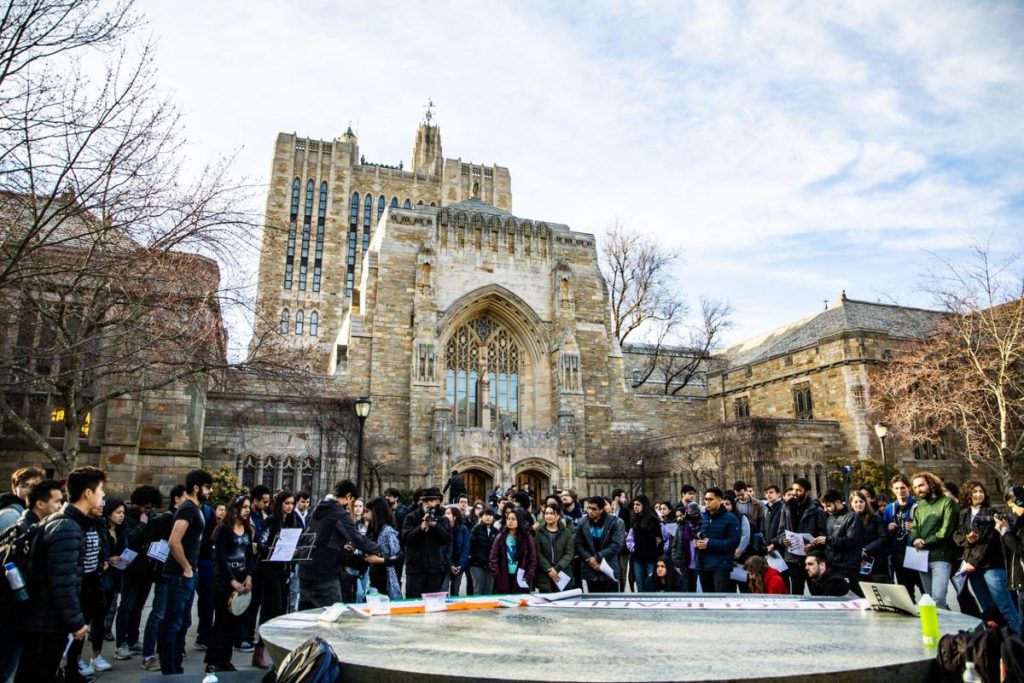
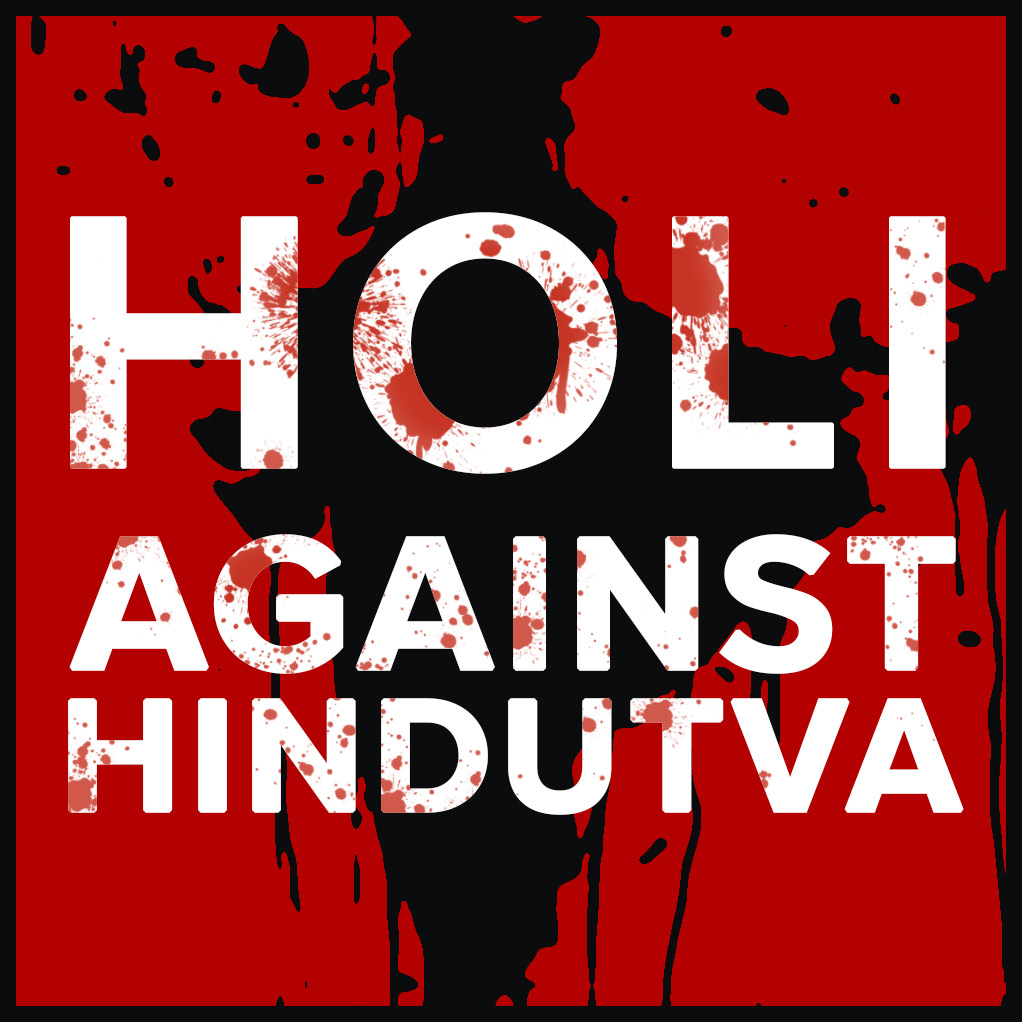
Now while we’ve answered our query, I want to add an addendum to a vile specimen I’ve seen recently amongst the diaspora. Aping their equally contemptible cousins back in the subcontinent, this emergence of Indian-Americans who speak in the poisonous tongues of India’s elites is now slowly seeping into mainstream American culture.
They seek to transplant American history and dynamics onto India just as blindly as India’s elites have over the decades. Equating Hinduism itself to white supremacy and fascism and defining it solely by casteism are standard affairs for this type. They have no ingenuity in their discourse. The blueprint of their commentary is amateur oppression Olympics. Their foundations are self-loathing. Their walls are an echo-chamber blocked off by the soulless skyscrapers of coastal elites on one side and the great blue filter of social media on the other. Their roofs are paid for by verbal prostitution. Their material is so common, yet they have a profound disdain for commoners. They are copy + paste. Many are essentially white progressives with a sprinkling of turmeric and cumin for empty color and scant flavor.
They are from South Asia, not the Indian Subcontinent. Their culture can be summed up into samosas, chicken tikka masala, a few “South Asian” outfits, and henna. Depth is an allergy to them so their roots are forever undiscovered but much-maligned. They will go out of their way to pin every misfortune and misery inflicted upon other minorities as purely due to economics or European imperialism, but will not hesitate to blame the downfalls of India solely on Hinduism and its indigenous culture. On the off chance that they navigate blame to the British, they will remain mum on the equally or even worse atrocities of the Mughals and their hate-filled predecessors. Their silence screams at the scars and ruins of their ancestors’ temples, all to preserve this mythic “solidarity” amongst fellow “South Asians.”
As they watch their fellow Indian-Americans break all barriers, their reflex is dismissal. When our minority becomes model, they relentlessly attack their own people instead of appreciating and applauding. Excuses for success rather than attributing it to hustle and immigrant sweat. They write paragraphs lamenting how every Indian-American has come to America with a silicon laced gold brick in their mouths, a silver stethoscope around their necks, or a platinum high caste thread over their shoulder. They wash away the struggles of immigrants with haughty commentary and exhibit a saffron-tinged white guilt. They seek to be the oppressed lamenting at the impending “fascism” that is perpetually 1 Republican representative away from arriving and simultaneously the oppressor as they claim Hinduism itself is oppression. They cloak their jibes in a mythic and undefined “Brahminism” where they attribute normal Hindu practices like vegetarianism, innocent rituals, and practices performed by all castes and communities as part of a grand conspiracy of “Brahminical supremacy;” the irony being that many of these commentators are Brahmins or high caste themselves! Due to their skin color and last name, they believe they are the chosen voice for over a billion other Indians and millennia-old civilization.
Essentially, they care about what India looks like, not what it is. They seek approval at any cost. But either way and in the end, why should they expose their necks in courage when they can swallow their pride, forever remaining craven?
One of my favourite examples to demonstrate why Hindus and Muslims are like chalk and cheese (or cheese and chalk- no value judgment implied by the metaphor!) is their respective treatment of Jains and Ahmadiyyas.
We all know about the plight of Ahmadiyyas in Pakistan. Not a week goes by when there isn’t a story in the media on Ahmadiyya persecution. To Indian eyes, this can be quite baffling. The Ahmadiyyas reserve a highly exalted position for Prophet Muhammad. By all socio-cultural markers: naming and dressing conventions, eating habits, praying patterns etc., they appear “Muslim”. Yet certain theological red lines are crossed- including the recognition of Indic icons such as Buddha and Krishna as prophets, but most importantly the perceived violation of the doctrine of Khatam-un-Nabiyeen: the finality of Muhammad’s prophethood. A clear case of orthodoxy trumping orthopraxy. This hostility towards the Ahmadiyyas is not a recent phenomenon and can be traced back to the views of the founding fathers of Pakistan, such as Allama Iqbal.
From a Hindu perspective, this can appear bizarre- ethnic Punjabi “Muslims” who share so much in common in both cultural and kinship terms are so hostile towards each other due to some theological disputes. There are more consequential theological disputes within sects of Hinduism. For example, within Vaishnavism, there is the Dvaita Vedanta school founded by the 13th century scholar-saint Madhavacharya which believes that the Divine (i.e. Vishnu or the supreme being) is distinct from the individual. The better known Advaita Vedanta school founded by Adi Shankaracharya is Monistic (i.e. believes in the essential unity of the Divine or Vishnu and the individual). From a theological perspective, these ruptures are perhaps as radical as those between Sunni Muslims and Ahmadiyyas. Yet, the average modern Hindu, even someone who self-identifies strongly as a Vaishnavite, would find the notion of being hostile to other Vaishnavites on the basis of doctrinal differences to be bizarre and laughable.
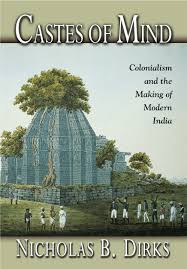 Some of my Hindu American friends online engage in a defense of attacks on Hinduism by denying the necessary connection between caste and Hinduism. Since religion is made by men, this is true on the face of it. There is nothing necessary in any religion.
Some of my Hindu American friends online engage in a defense of attacks on Hinduism by denying the necessary connection between caste and Hinduism. Since religion is made by men, this is true on the face of it. There is nothing necessary in any religion.
But, Hinduism is a religion strongly associated with the Indian subcontinent. Far more than Islam is necessarily associated with Arabia! (the greatest doctors of Islam were not Arabs, but more often Persians!) And caste is strongly associated with the Indian subcontinent. This is not a transitive relation, but the affinity is clear. It has hard to think about Hinduism without caste and jati, though it is possible (e.g., Tulsi Gabbard is a devout Hindu, but not Indian, while some Muslim Indians have their own forms of endogamous caste, despite not being Hindu).

Is this just a historical coincidence? Like many, I have read Nicholas Dirks’ Castes of Mind. Though Dirks acknowledges the ancient origins of varna and jatis, he puts great emphasis on the rationalization of the system under the British. Additionally, he points out the rise and fall of jats. The Indian landscape is communally fluid in its hierarchy.
This is plausible. But I do not believe it is true on a deep and fundamental level. I have come to this conclusion because genetics is so striking.
When I first stumbled onto these facts they were shocking and bizarre. Totally unexpected. I assumed some caste stratification, but this was ridiculous.
These are the reasons that though I believe the new modern Hindus do sincerely abhor caste and jati, it is sometimes hard to take their protestations that the connection between caste and Hinduism is incidental. You are {{{Brahmin}}}, the product of several thousands of years of endogamy written all over your genes, the scion of the priestly caste of Hinduism, protest that caste and jati have nothing to do with the religion! Except that the priestly castes seem to be amongst the most punctilious adherents to endogamy of all!
So what’s the future? As an atheist of Muslim familial background I have some advice: make Hinduism less Indian, because that is the fundamental issue. Hinduism evolved organically within the Indian subcontinent with jati and varna, and like intertwined siblings growing up in the same house, there are some shared characteristics. Grow up. Leave the house. Be your own person.
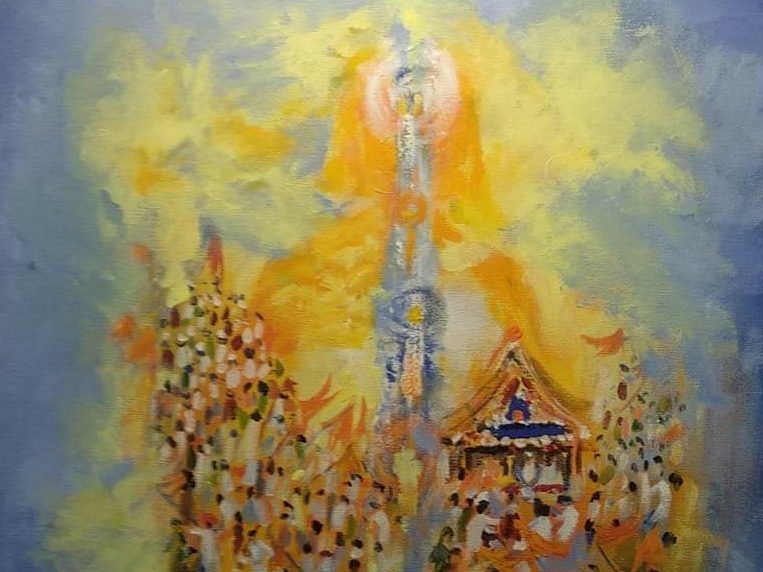
The pluralism in Hindu thought is often pegged back to the philosophically sophisticated एकं सत् विप्रा बहुधा वदन्ति from Rgveda – first mandala. While that message underlies a lot of Hindu thought as we know it, it’s often overstated as it sounds sophisticated to the scholars/amateurs studying it. On the other hand, some hymns from the family books, particularly the Rgvedic Hymns 7-82 to 7-89 give a fascinating peek into the mind of the Bharata purohit Vasishta after the Dasarajna Yuddha. The hymns which are very repetitive mostly praise Indra and Varuna for the help given to Sudas(Bharatas) and the Trstus in the Dasarajna where the enemies also worshiped Indra. The important point to glean here is the different functional roles for which these deities are evoked. Indra for war, Varuna for prosperity, Aditi for light, etc. Varuna who is often paired with Mitra or Aryaman, gets paired with Indra here – which scholars (RN Dandekar, Michael Witzel, etc) see as conciliatory.
According to Dandekar, it was out of this experience of bhakti that Vasistha became essential in the conciliation of the Indra- and Varuna-cults and especially in “averting a schism in the Vedic community” by demonstrating “that Varuna and Indra were not antagonistic to each other but… essentially
complementary. ‘Indra conquers and Varuna rules.”
It is fair to speculate that such a conciliatory approach would go on to shape interactions the mainstream Vedic thought would have with non-Vedic deities as these hymns are the victor’s recollection. This conciliation and integration (A) appear much more pragmatic and economic than abstract ideals (B) espoused by एकं सत् विप्रा बहुधा वदन्ति or other sophisticated thought from Upanishads or Gita. For B to emerge and sustain, A appears essential. With A established, B in some form or other would follow as evidenced by other Eastern faith systems which also tend to be inclusive. It is fair to say a combination of A and B lays the foundation for the emergence of quintessential pluralism of Hinduism.
Let us segway into a short story:
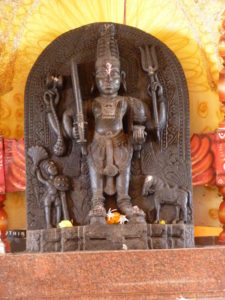
This is the fanciful tale of my great-great ancestor as told to me by my Chachera uncle (first cousin once removed). The Gotras are not important to this piece but the emphasis and obsession on Gotra is a salient feature of Brahmanism which deserves some attention. This tale is not very atypical. There have been other documented cases of such squabbles between village Hinduism and Brahmanism. This tale echoes many other tales from South Konkan – those of Ravalnath, Betal, etc. I am unsure if the deity in the tale of my ancestor is Ravalnath or Betal or something else entirely. But the contours of the tale are very similar. In both the cases of Ravalnath and Betal, there was initial resistance to these deities from local Brahmins in the medieval times – especially due to local traditions that involved blood sacrifices and other things frowned upon by Brahmins, but over time these deities got wider acceptance – even among local Brahmins. 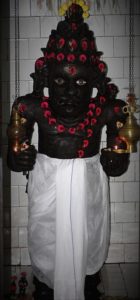 While Ravalnath is a Kuladevata for most Goans (all castes), Betal is a Gramadevata of some local communities. Vithoba, the popular God of Pandharpur( the annual Waari) is a very important figure of the Bhakti movement. Religious scholar and Sahitya Akademi winner RC Dhere who extensively studied Vithoba also hypotheses pre Vedic origins of Vithoba. Khandoba is another deity whose origins are similarly muddy with a range of theories explaining him as the fusion of earlier deities including Kaal Bhairav. Interestingly in the Puranic tale of Kaal Bhairav “his struggle for the atonement of Brahmanhatya” is central. Khandhoba of Jejuri remains a deity for not only the Sudra castes, but Brahmins, Jains, Lingayats, and even some Muslims including the patronage of comparatively tolerant Bijapur Sultan Ibrahim Adil Shah. While it would be tempting to dismiss this as some tenuous Donigerish take, the sheer numbers of such stories spread across the country strengthen the hypothesis.
While Ravalnath is a Kuladevata for most Goans (all castes), Betal is a Gramadevata of some local communities. Vithoba, the popular God of Pandharpur( the annual Waari) is a very important figure of the Bhakti movement. Religious scholar and Sahitya Akademi winner RC Dhere who extensively studied Vithoba also hypotheses pre Vedic origins of Vithoba. Khandoba is another deity whose origins are similarly muddy with a range of theories explaining him as the fusion of earlier deities including Kaal Bhairav. Interestingly in the Puranic tale of Kaal Bhairav “his struggle for the atonement of Brahmanhatya” is central. Khandhoba of Jejuri remains a deity for not only the Sudra castes, but Brahmins, Jains, Lingayats, and even some Muslims including the patronage of comparatively tolerant Bijapur Sultan Ibrahim Adil Shah. While it would be tempting to dismiss this as some tenuous Donigerish take, the sheer numbers of such stories spread across the country strengthen the hypothesis.
Coming back to the descendants of the uncompromising Brahmin from Vengurla. Today my extended family proudly worships all the Gramadevatas from Ichalkaranji whose origins may be very similar to the one whose foundation my ancestor had objected to. Ironically most of my paternal family follow a plethora of local Saints (in addition to the popular Bhakti Saints), whose tales of the origin have occurred within living memory and hence are far easier to negate. I would not go into rants about these Saints (esp Gajanan Maharaj) whose followers number in millions. While some traditional elite Hindus (especially Urban) are known to have disparaging views of Saints & local deities, mostly these distinctions have weathered away. It is not unlikely to find Hindus who fast on Mondays for Shiva also fast on Thursdays for some local Saint (who mostly claim intellectual or avatarish descent from Dattatraya). Despite some initial friction, the Brahmanical thought has made its peace with such traditions. Most scholarship refers to this as – the local traditions (non-Vedic) being co-opted by Brahmanism. IMO this is an incomplete way of looking at it as it conflates organic integration which typically occurs over generations with the realization of some highly foresighted plan. Typically humans are not foresighted enough to pull off multi-generational machinations. From a multi-generation evolutionary paradigm, these would make sense but not if you take a snapshot at any particular moment in history.
With this background, we go into realms of pure speculation and come to the Post Vedic deities in Hinduism. The origin of some of these deities is highly contested – especially that of Shiva. While the Rgvedic Rudra is often said to be the precursor of Shiva, the meaning of Shiva is certainly in contrast with Rudra. 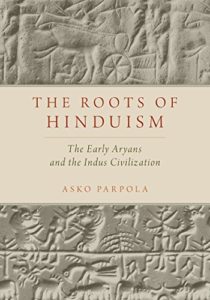 Whether the Pashupati seal from IVC or other Proto-Lingas are Proto-Shiva or not will likely not be resolved till we decipher the IVC script, but these speculations seem very plausible. Even Parpola doesn’t dismiss them in his Roots of Hinduism. In addition, Parpola makes a good argument in the IVC origins of Durga with seals of Tiger riding goddesses from Kalibangan. Similarly, we can say the Dravidian Murukan and the Vedic Skanda gave rise to the Karthikeya we know today. We still don’t have any intelligent speculation about the origins of Ganesha (other than some references to Gajapati), buts it fair to assume the elephant-headed god is a pretty late addition to the Hindu pantheon. The aim here is not to discuss and speculate the origins of these deities but to guess the mechanisms of integration of these deities and customs into Brahmanism. Brahmins had a huge ritualistic/moral capital, but given the tenuous or conflicting relations they had with the Kshatriyas and other dominant castes (as seen through numerous puranic stories especially those of Parshuram) it is fair to assume Brahmins would not often get their way with subtracting traditions they found Adharmic or uncouth, yet they could continue to shape these traditions from inside with participation. Pressure both from the masses and Brahmins would’ve actively shaped the integration of these traditions for centuries to the point where it’s often hazy where Brahmanism ends and where “Non-Brahmanical” traditions begin. (This probably happened with Sramana or Proto-Sramana traditions competing with Brahmanism but that is a different discussion)
Whether the Pashupati seal from IVC or other Proto-Lingas are Proto-Shiva or not will likely not be resolved till we decipher the IVC script, but these speculations seem very plausible. Even Parpola doesn’t dismiss them in his Roots of Hinduism. In addition, Parpola makes a good argument in the IVC origins of Durga with seals of Tiger riding goddesses from Kalibangan. Similarly, we can say the Dravidian Murukan and the Vedic Skanda gave rise to the Karthikeya we know today. We still don’t have any intelligent speculation about the origins of Ganesha (other than some references to Gajapati), buts it fair to assume the elephant-headed god is a pretty late addition to the Hindu pantheon. The aim here is not to discuss and speculate the origins of these deities but to guess the mechanisms of integration of these deities and customs into Brahmanism. Brahmins had a huge ritualistic/moral capital, but given the tenuous or conflicting relations they had with the Kshatriyas and other dominant castes (as seen through numerous puranic stories especially those of Parshuram) it is fair to assume Brahmins would not often get their way with subtracting traditions they found Adharmic or uncouth, yet they could continue to shape these traditions from inside with participation. Pressure both from the masses and Brahmins would’ve actively shaped the integration of these traditions for centuries to the point where it’s often hazy where Brahmanism ends and where “Non-Brahmanical” traditions begin. (This probably happened with Sramana or Proto-Sramana traditions competing with Brahmanism but that is a different discussion)
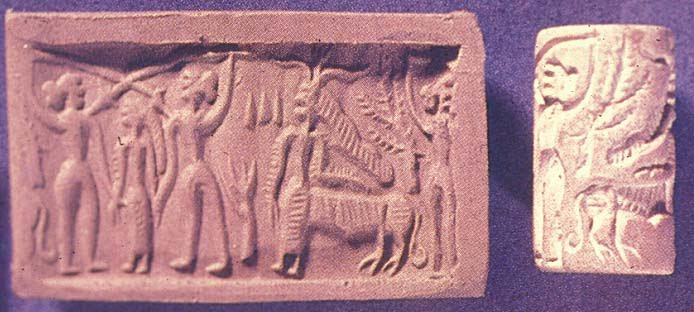
While it is generally said Brahmanical thought absorbed the local traditions, it is equally or more appropriate to say that the village Hinduism made space for Brahmanism & tamed it – into the diverse and plural fold and this process was not complete for the entire subcontinent when Mahmud of Ghazni attacked Somnath. Scholars like to emphasize Adi-Shankara’s Advaita and Mutts, Upanishads, Rgvedic “एकं सत् विप्रा बहुधा वदन्ति” as it appears sophisticated and intellectual. However, the tendency of humans to pragmatically negotiate the boundaries of their traditions (in absence of exclusionary universalist ideas) when they already have multiple modes of worship tends to be underemphasized as it appears uncouth or folk. Roman religion easily absorbed Isis and Cybele into the Roman fold but couldn’t absorb the God of Abraham. In contrast, when Christianity conquered Europe it absorbed the old gods into the Christian fold as Saints but kept them subordinate to the one true god. However, Shiva and Ganesh did not bow done to Indra, and by the time of the Puranas, the mighty Vedic Indra was reduced to an insecure and somewhat petty King of Gods.
Maybe the Brahmin elites & Sanskrit managed to maintain a cohesive identity-based on sacred geography only because they themselves were tamed in similar mechanisms by the natives of the geography. If yes, then Hindu Pluralism and Syncretism is as much a legacy of numerous lost stories as it is of the philosophical moorings of the Vedas, Itihasas, and Upanishads.
Postscript:
I had been thinking along these lines since my discussion with Mukunda and Omar on the Brown-cast about the roots of Indian pluralism. While commenting please stick to the topic and be civil & constructive. I will delete off comments for this piece.